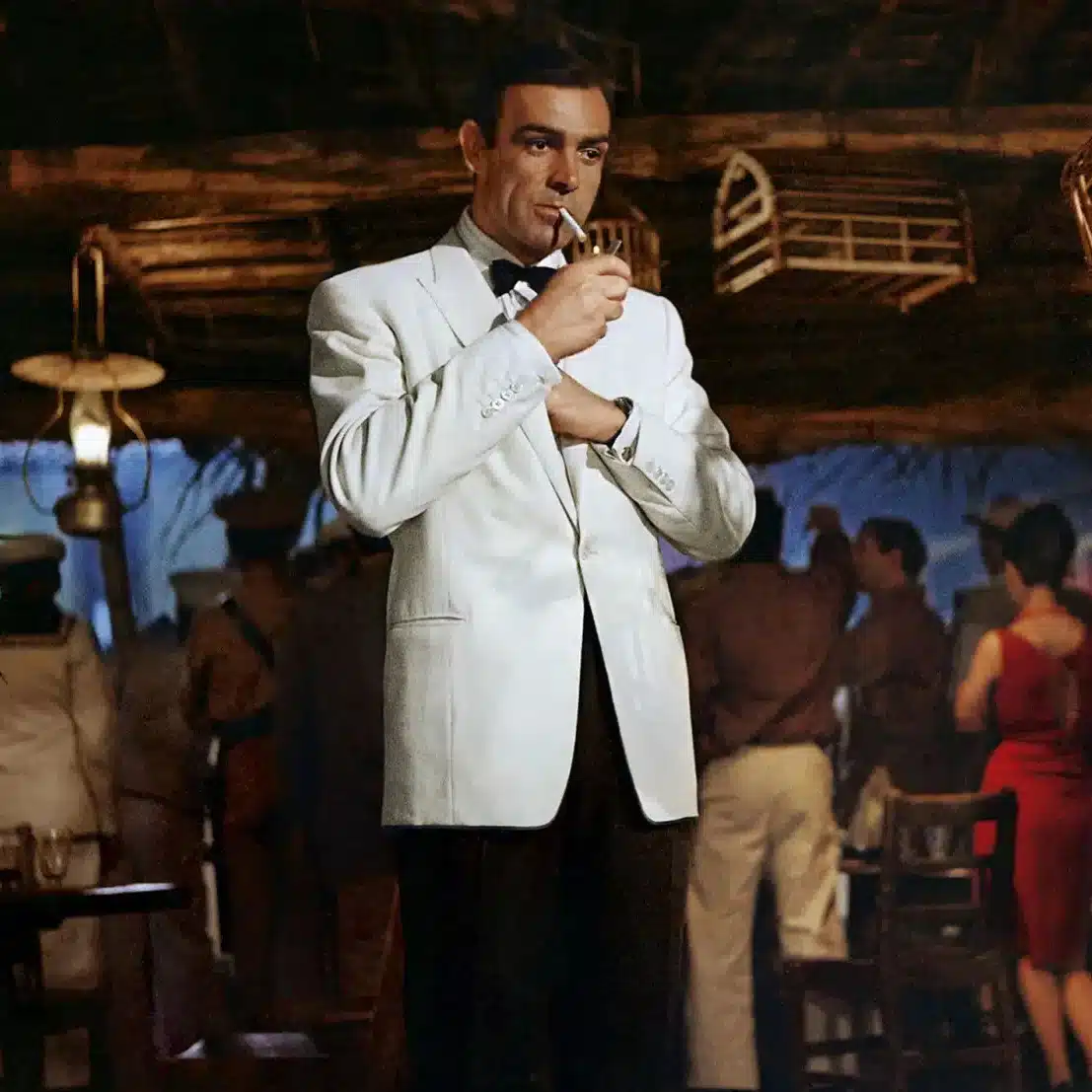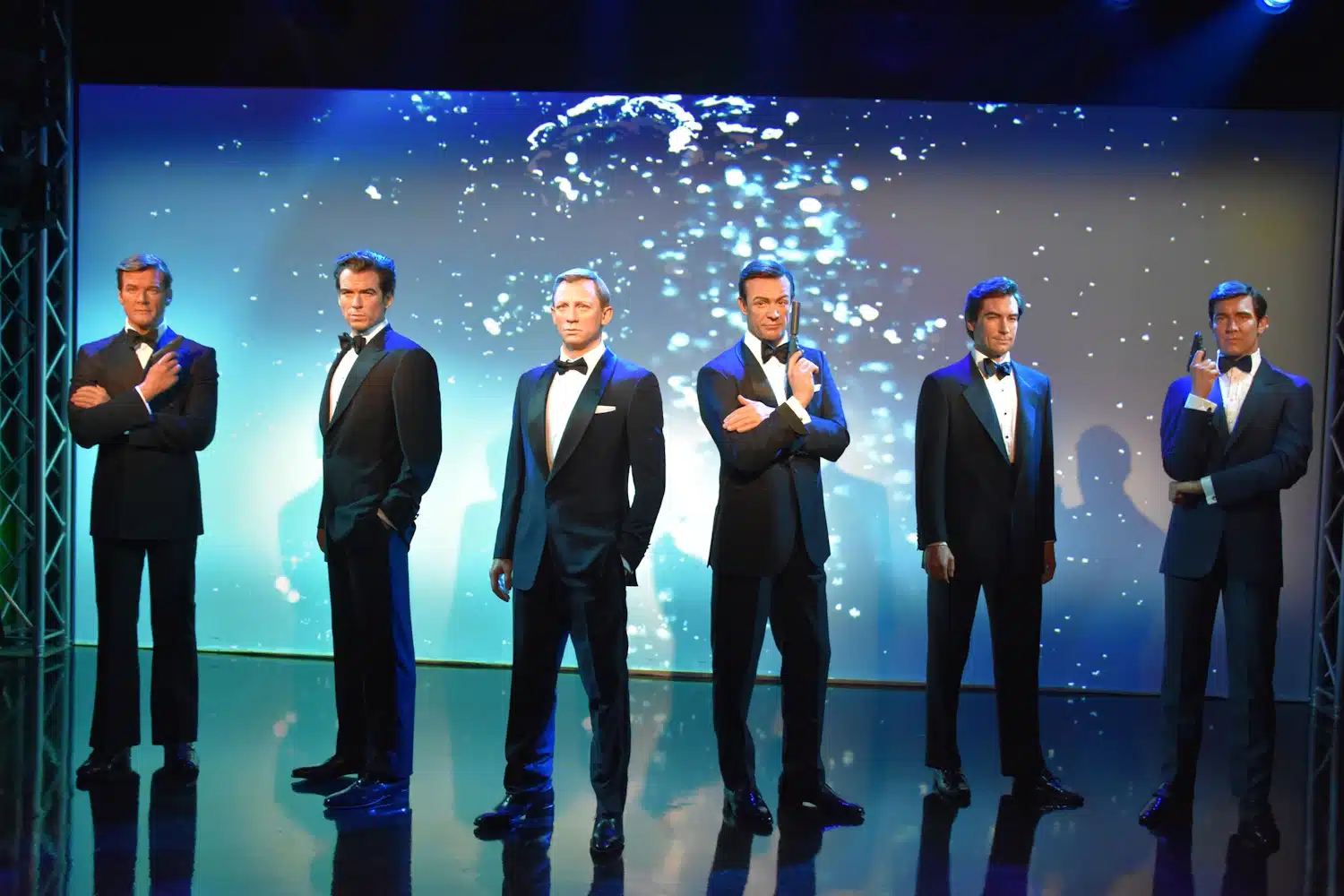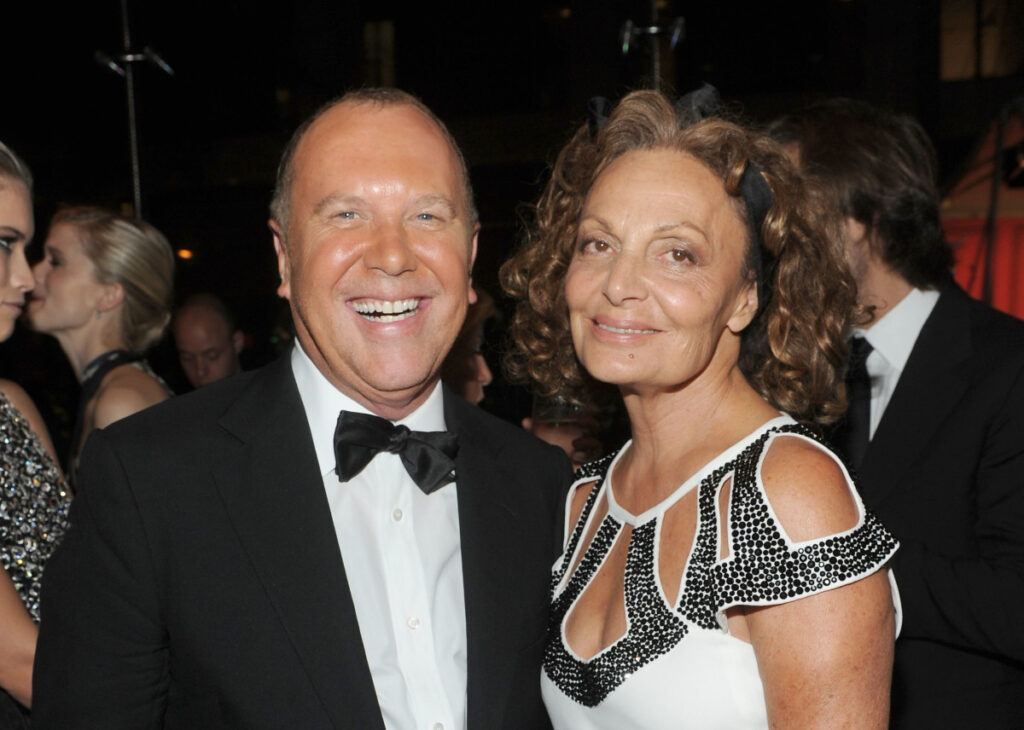[ad_1]
Every iteration of 007 has become a menswear icon thanks in part to exquisite tailoring. Let’s dive into what makes James Bond suits so special.


I remember first seeing Casino Royale and feeling a sense of worry in the pit of my stomach. It’s not that it wasn’t good. In fact, I believe it to be one of the top five best James Bond films of all time.
Still, why was he driving a Ford? And how’d we get so far into the movie without seeing a proper James Bond suit? Why does he suddenly not “give a damn” if his martini is stirred? Was the “eat the rich” movement forcing Hollywood to ground his aspirationalism down to earth?
As the film progresses, we learn that it’s an origin story. He eventually becomes that fantasy archetype, thank goodness. He’ll drive Aston Martins. He’ll jump off buildings and get into violent fistfights without ripping a seam on his restrictively tailored suit.
Who cares that the Daniel Craig era of tailoring gets trimmer with each film, and yet his gun holster doesn’t print on his Tom Ford jacket? I certainly don’t.
From being a visual shorthand to symbols of character evolution, James Bond suits are the most narratively important part of his wardrobe.
James Bond Suit Style
Thanks to his suit and the impeccable way Sean Connery carries himself, you have an exact idea of who James Bond is as soon as he’s introduced.


So, we’ll start with Sir Connery’s suits and make our way through from there.
Sean Connery: The Immortal Introduction and Sartorial Consistency
Sean Connery’s Bond famously wore suits made by Anthony Sinclair, a tailor on London’s Conduit Street. The inaugural 007 wore shirts from Turnbull & Asser, Lanvin, and Frank Foster.
Bond Tailoring Makes its Debut
The iconic introduction scene in Dr. No is one of the most effectively curated scenes in cinema. Everything, from the glitzy background to the fact Bond negs Sylvia Trench by prioritizing lighting his cigarette before telling her his name (without eye contact), speaks volumes.
And the element that brings it all together is his midnight blue dinner jacket with a shawl collar. He’s also wearing a thin, pointed bowtie and silk gauntlet cuffs. It’s a classic but distinct look, then and now.
Immediately, we gather that “Bond, James Bond” is a gentleman. At least he is in the sense that he’s high-class and discerning, not necessarily a gentleman in how he treats women.
This is because you get the sense that he’s also possibly dangerous, but also an irresistible winner.
The Fan Service Suit
Bond’s best-remembered suit among the fandom is arguably the Goldfinger gray glen check suit. Many consider it one of the best James Bond suits, and it gets its own introduction.
We see 007 unpacking it on the plane and hanging it up on the bathroom door. He has a proper shave before coming out clad in its forward-pleated, waistcoat-lapeled glory.
You know how little girls have that Cinderella transformation moment from the Disney film? Well, guys have this.
It’s like seeing Bruce Wayne don the Batman suit for the first time in the Nolan film series. The difference is that it’s something men can emulate in real life.
In fact, the cinematic trope of symbolic fashion transformation is more commonly used for female characters. And when male characters are given that treatment, it’s usually for the gaze of a female audience — think Leo Dicaprio’s Jack Dawson putting on a tuxedo for Rose in Titanic.
This Goldfinger scene and that suit come together in an effective symbol of “the suit maketh the man.”
From Dive Suit to Dinner Jacket
I’d be remiss if I didn’t mention another cool Goldfinger moment that has loads of rewatch value.
Bond comes up from the water in a full diving suit. He then unzips it to reveal a formal, white dinner jacket. How is it perfectly pressed and steamed after being bunched up under there?
Let’s call it a mix of Anthony Sinclair’s structured and timeless tailoring and a little bit of movie fantasy. Bond then pops a red carnation onto his lapel, completing the look.
George Lazenby: ‘60s Peacocking
George Lazenby wore suits made by Dimi Major and shirts by Frank Foster.
Unfortunately, Lazenby only had one outing as Bond. I say unfortunately because he’s actually one of my favorites. Though admittedly, it’s easy to remember his look as the main source material for the costume designers for the Austin Powers films.
We’ll never forget those voile shirts and ruffled fronts. Heck, he even wore a kilt. No Bond would ever be as conspicuous, and for that, Lazenby is truly unique.
However, we should also credit Dimi Major for bringing in what we consider classic English tailoring today. Lazenby’s trousers were slimmer than Connery’s, with darted fronts and ropeless sleeves heads.
This is best seen through his rakish Prince of Wales check suit.
Say what you will about the shirts, but the suits are truly trend-resistant.
Roger Moore: An Eclectic (and Flared) Bond for a New Era
The Roger Moore films were famously different in tone than Connery’s. The suiting represented this shift.
Connery was all about consistency. He had a cohesive look that implied Bond was a man with detailed and specific tastes. Roger Moore’s Bond was more varied due to the fact he had several designers doing his tailoring throughout his tenure.
I think it’s safe to say that tailor Cyril Castle provided this era with all of the hallmarks we associate with Roger Moore’s Bond: Wide lapels, double-buttoning when it wasn’t “traditional,” and of course, those era-appropriate bell bottoms.
Designer Angelo Vitucci continues the ‘70s-centric fashions with large collars and brown suits. However, his lapel scarves and heavy shoulders brought an Italian design sensibility, reminding the audience that this light-hearted Bond is as cosmopolitan as ever.
And finally, tailor Douglas Hayward softened the lines and trimmed down the pants, just in time to bring 007 into the ‘80s.
Roger Moore’s Cool Suit Moments
There are two tailoring moments that I think are quintessential to the lighter vibe of Roger Moore’s Bond.
The first is his silk suit in The Man with the Golden Gun. It’s a bright marine blue. Not navy. Marine blue.
It’s bold yet still classic. It’s during a nightclub scene, so few would say it’s inappropriate in context. He finishes the look off with a voile shirt and a red satin tie.
If you love primary colors like I do, this suit is an excellent inspiration.
The second, in the same film, is when Bond enters Scaramanga’s funhouse. In it, he finds a mannequin in his likeness.
In a funny and possibly self-aware moment, Bond removes the dummy’s black jacket and knitted tie. He puts them on and poses as the dummy, allowing him to outwit Scaramanga in the victorious finale.
Moore was the only 007 who wasn’t too cool to pretend to be a dummy. Let’s not forget that he also disguised himself enthusiastically as a clown at one point.
Our next Bond would never.
Timothy Dalton: Justice for This Pragmatic Fan Unfavorite
Timothy Dalton’s designer during his time as 007 was Jodie Tillen.
When I say “fan unfavorite,” I’m not referring to Dalton himself. His grittier Bond brought a lot to the table. We may not have had the acclaimed Craig era if not for it.
Fans didn’t appreciate that his wardrobe was more practical and less aspirational.
This Bond packed huge realistic suitcases. He never unzipped a wetsuit to reveal a magically, flawlessly pressed dinner jacket underneath. His ties came loose during fights. In fact, this Bond seemed strangely allergic to neckties.
Fans of the franchise could forgive all of this if not for the fact he wore so many ready-to-wear pieces. And while I may not be turning to Dalton’s Bond for sartorial inspiration, I appreciate how it matches this less glamorous era for 007.
That Velcro Moment
Dalton does serve up one classic suit moment, though.
In The Living Daylights, agent Saunders teases Bond for wearing a dinner suit. He reminds 007 that they’re on a mission, “not a fancy dress ball.”
Later, James flips his shawl collar up and towards each other, connecting both sides via clasp or velcro. He effectively transformed his suit jacket into tactical wear.
It’s a cool factor moment that doesn’t compromise the pragmatism of Dalton’s Bond.
Dalton’s American Suiting vs His English Suiting
Here’s a fascinating thing about Timothy Dalton’s tailoring. In The Living Daylights, he wears English-style suits, as Bond always has.
They were essentially ready-made versions of Connery’s bespoke suits.
However, in Licence to Kill, he goes for a markedly American look. This is despite the fact the title maintained its British spelling of “license” during its American release.
Part of this is practical, a completely unsexy explanation that, to some, kills any credibility left in the Dalton era fashions. Licence was the first Bond movie not shot in the UK. It was based in North America and production simply used readily-available resources.
Also, along with making this Bond darker and more violent, they were possibly trying to match the look and feel of American action movies that were big in the ‘80s. 007 was trying to find where he fits in the age of Stallone, Schwarzenegger, and Van Damme.
All of these action stars wore the American ready-to-wear take on what was contemporary Italian style at the time. This meant oversized fits, sloppy, undersized collars that sort of hung haphazardly, and rough, loose pants.
Pierce Brosnan: The Legendary Brioni Era
The James Bond suit brand of the modern era is either Brioni or Tom Ford. It’s likely both.
The costume designer for the first Pierce Brosnan 007 romp was Lindy Hemming. I owe a lot to her because she introduced Bond and me to the Omega Seamaster, my all-time favorite watch. She also introduced Brioni to the franchise.
The World Is Enough
High-end Italian bespoke house Brioni is the reason why Brosnan’s suiting stands the test of time. They also represent, even if not purposefully, a fast-globalizing world.
Brioni’s Bond suits were far lighter than the suits that came prior, the latest thing in Italian fashion at the time.
Bond was leaning more into a professional look these days.
I wouldn’t go as far as to say this era had a nouveau riche slant. He was, however, a little less like an Englishman of leisure, popping into White’s Gentlemen’s Club after a grouse hunt on his estate. A little more like a wheeling and dealing international closer on the Square Mile or Wall Street.
He wore extra fine worsted wool, and his pinstripes were subtle as the Italians prefer it, or skinny as the Americans do. Gone were the days of the English-preferred chalk lines. And his overcoats were no longer heavy, structured wool but soft cashmere.
Though the cuts were Italian, the cloth was sourced from England. So that black mohair and that beloved navy birdseye? All from England’s fabric-making center, West Yorkshire.
Basically, Bond suits at this time were ‘90s internationalism in fashion form.
Classics Never Die
There are three suit moments I’d like to quickly spotlight. These moments prove that even in the face of modernization, Bond’s core is timelessness.
First, in GoldenEye, Brosnan wears a three-piece tuxedo. What’s remarkable about this dinner suit is that he wears a waistcoat, which Bond almost never does. Lazenby aside, Bond has historically exuded a more minimalist sophistication.
Second, is the prior-mentioned cashmere coat moment. Combined with the three-piece blue birdseye suit, Brioni and Hemming nail a look that could’ve been worn in the ‘40s, looked superb in the ‘90s, and could easily be sported today.
And finally, the gray sharkskin suit from The World is Not Enough is definitely a hat-tip to Sean Connery. Brosnan even wears a Turnbull & Asser shirt.
Daniel Craig: Character Evolution Represented in Tailoring
The Daniel Craig chapter of the Bond franchise is mostly known for trim Tom Ford suits. However, we sometimes forget that it was a journey to get there.
This era would combine the grittiness of Dalton, the slickness of Connery, the boldness of Lazenby, and the self-awareness of Moore and Brosnan.
Even more, the tailoring represented this.
A Transitional Beginning: Bond’s Origins
Daniel Craig’s era both honors and pokes good, harmless fun at Bond tropes. The origin story, Casino Royale, begins with a man who would become Bond. He isn’t even a double-O until after the intro.
As such, he scoffs at the tropes until the very end, when he repeats Connery’s immortal introduction, completing the transformation.
His suits represent this too. In fact, you don’t see him in proper tailoring until several scenes in. And it’s all Brioni, with wide silhouettes and long arms.
Throughout the film, this is a Bond who is still learning to be Bond. Therefore, he goes back and forth between hesitantly accepting his character or emulating past versions.
You even see this in his relationship with his Seamaster, which is the same wave dial design in GoldenEye. Vesper Lynd, a top-three Bond woman, asks if it’s a Rolex. He corrects her. This exchange acknowledges and honors Bond’s ever-present style of the past while looking to the future.
Tom Ford Emphasizes the Growing Fantasticality
Tom Ford and costume designer Louise Frogley started the “slimmification” of Bond’s suits in Quantum of Solace. They were more English bespoke, less professional Italian, and they were close-to-the-body.
As the film series progresses, so does the slimming down. Skyfall is a turning point in the Bond films. It’s a reckoning with James’ past and more of a true sequel to Casino Royale.
It trims the fat, closing the book on the intellectual whys and hows, setting the stage for the full-on, popcorn, trope-heavy Spectre.
No more thinking. More shooting, more pretty ladies, more explosions. We’ve earned it.
And so, the fat is also trimmed in the tailoring. And finally, we have the cropped, trim, unrealistic, body-con suiting Craig’s era is known for, perfectly displayed in the pre-credits sequence of Spectre. The fantasy is complete.
Of course, this fantasy would be beautifully imploded by the end of the addendum film, No Time to Die. The impeccable tailoring remained though.
FAQs
Here are a few quick answers to common questions about the suits of James Bond.
What Brand of Suit Does James Bond Wear?
He wears different brands in different eras, starting with Anthony Sinclair during the Connery era. Brioni and Tom Ford are two modern brands Bond wears.
Who Manufactures James Bond’s Suits?
Several brands, again such as Anthony Sinclair and Tom Ford, made Bond suits throughout time. Even when he went with Italian tailoring, designers often used materials from England.
Does James Bond Wear Brioni?
Yes, he started wearing Brioni in the ‘90s and continued to until Casino Royale in 2006.
Conclusion
From Breakfast at Tiffany’s to Sex and the City, narrative expression through style has always dominated women-oriented content. Sure, Peaky Blinders gave rise to interest in old-school tailoring among fashion guys, and watches have always played a role in male-centric media.
However, no franchise has ever incorporated clothing into its world and stories in a way that appeals to men (both the everyday guy and the fashion guy) the way James Bond has.
Which is your favorite James Bond suit? Let me know in the comments!
[ad_2]
Source link



